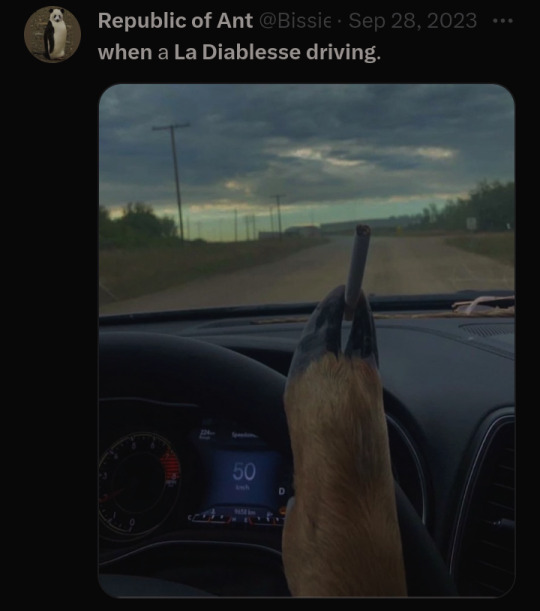#caribbean folklore
Explore tagged Tumblr posts
Text
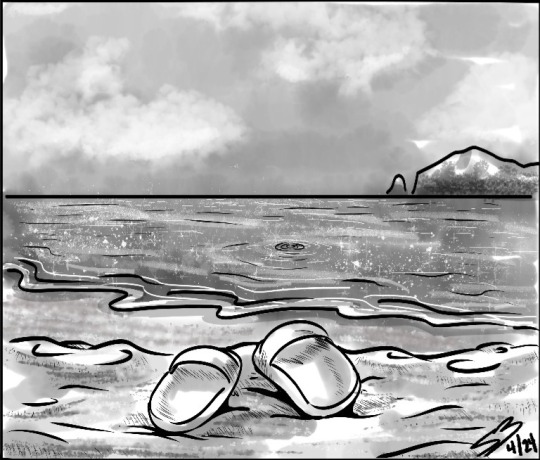
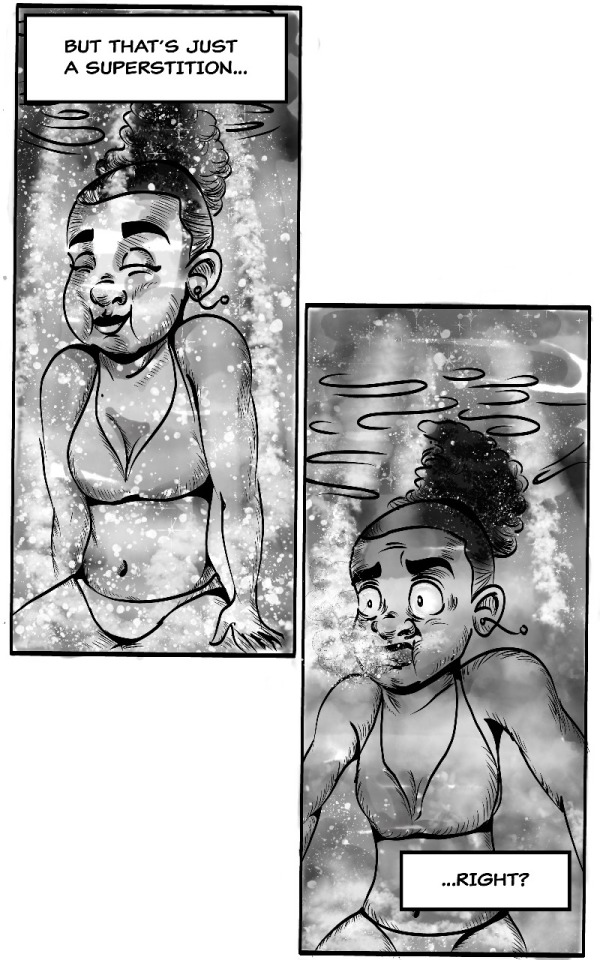
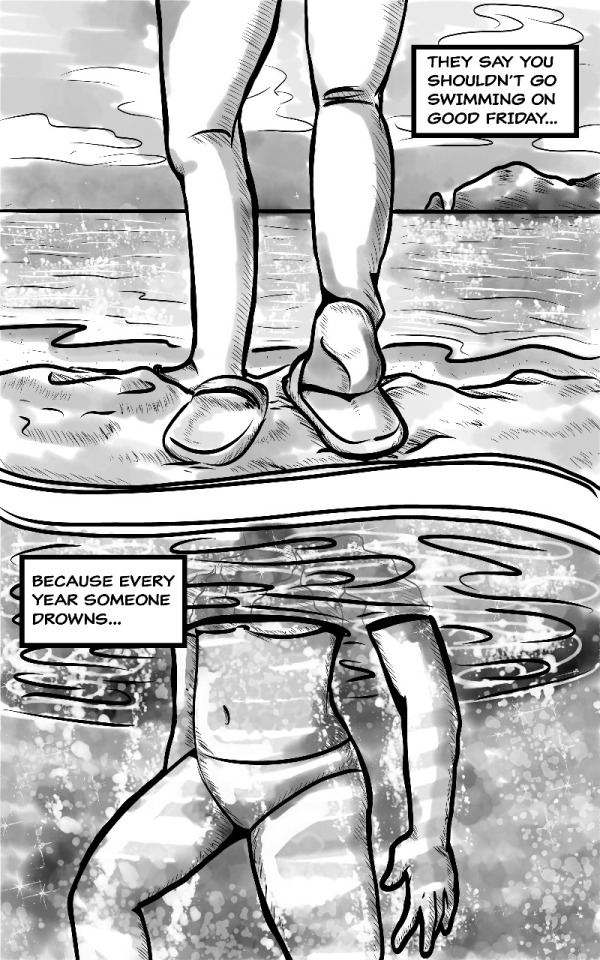
A lil (late) Good Friday horror comic.
There's a well known superstition that one must never go swimming, or even to the beach on Good Friday because without fail someone has drowned.
there was a discussion on caribbean Twitter talking about making a horror short story/film about this superstition and I couldn't get it out of my head, so this was my take on it!
experimenting with black and white and watercolour brushes in fresco!
#art#my art#illustration#digital art#adobe fresco#black and white#watercolour#comic#horror#horror comic#good friday#easter#superstitions#caribbeam superstitions#caribbean folklore#caribbean art#caribbean artist#vincentian art#vincentian artist
16 notes
·
View notes
Text
I want to learn more about African-American, Afro-Caribbean, Afro-Latino, and continental African folklore!!!
Especially the horror stories!!! I already know some but there’s so much I don’t know!
Can anybody please suggest any books or resources that talk extensively about folklore from these communities 🙏🏾?
#06 speaks#folklore#african american folklore#caribbean folklore#afro caribbean folklore#african folklore#afro latino folklore#horror#black horror#folk horror?
12 notes
·
View notes
Text
The Legend of Gang Gang Sarah

From Folklore and Legends of Trinidad and Tobago, by Gérard A. Besson:
“The legend of Gang Gang Sarah, the African Witch of Golden Lane, has its origins in the latter half of the 18th-century.
On a stormy night she was blown from her home in Africa across the sea to Tobago and landed quite safely at the village of Les Coteaux. From there, she journeyed to Golden Lane in search of her family, who had long ago been transported there. She lived to a great age and is remembered for her wisdom and kindness.
She became the loving wife of Tom, whom legend says she had known as a child in her native Africa.
After her Tom died, wishing to return to her native land, she climbed a great silk cotton tree and tried to fly, not knowing that she had lost the art of flight as a result of having eaten salt.
To this day the names of Tom and Sara can be seen inscribed upon the headstones of their graves. where they have lain side by side for close upon two hundred years.”
Photo by Lisa Levi.
#trinidad and tobago#tobago#trinbagonian#tobagonian#caribbean#west indies#west indian#caribbean culture#culture#caribbean folklore#folklore
4 notes
·
View notes
Text

Disturb not the one who stares up at the luminous moon.
Some say that if one manages to distract him from his focused attention to the Moon, he will begin to chase them in order to suck out their brain using the palm of his hand.
#BriefBestiary#bestiary#digital art#fantasy#folklore#legend#monster#moongazer#phantome#the moongazer#caribbean folklore#caribbean legend#guyana folklore#guyana legend#trinidad and tobago folklore#trinidad and tobago legend#giant#spirit#full moon#invisible
29 notes
·
View notes
Text
On March 24th we venerate Brother John Mason Brewer on his birthday🎉

An iconic folklorist, historian, scholar, educator, storyteller, poet, & quadlingial speaker, John Mason Brewer dedicated his 50-year long career, between the early 1900s to the 60s, to the documentation & preservation of Afrikan & Afrikan descendant narratives across the South, particularly his home state of Texas.
It was from the love & education instilled within him by his father & grandfather before him that spurred his barrier-shattering academic career, pursuing his B.A. in English & M.A. in Folklore, & professional career as a lifelong educator/professor and lecturer; in an era that many deemed nearly impossible to fathom. Though long before he was awarded prestigious grants for his outstanding contributions in research and the education of folk traditions among our people in the U.S. & the Caribbean & befriending the likes of U.S. presidents & other notable figures, Brother Mason spent his life fascinated by the tales & belief systems of our people that, over the years since the Great Migration & WWII, became best preserved in the South. He wrote and published a plethora of poems, books, and articles on Afrikan-American & Afrikan-Carribean history & folklore. If not for his unyielding presence in higher academia & public research institutions, and relentless pursuit of the preservation of Afrikan Ancestral voices in oral tradition & literature, centuries of wealth in knowledge and history of our people would be lost.
We give libations & well deserved 💐 today for his ancestral teachings & wisedom, delivered to us via the masterful art of storytelling and poetry & for lifelong work in unearthing & preserving a legacy ancestral voices never to be forgotten.
Offering suggestions: share/read his literary and academic work, a Methodist Bible/verse, & libations of water.
#Hoodoo#the hoodoo calendar#hudu#hoodoos#hoodoo folklore#hoodoo culture#john mason brewer#black poets#black literature#black scholars#African American Folklore#caribbean folklore
37 notes
·
View notes
Text
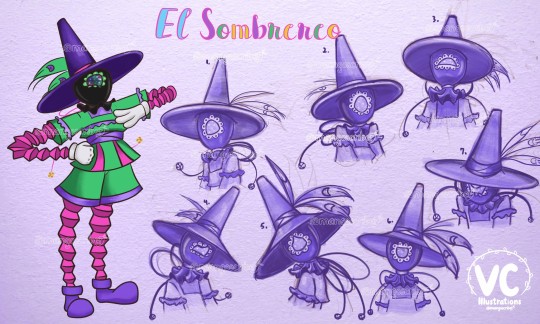
.
.
Expression sheet for El Sombrereo or Tye Mad Hatter for my LatAm AiW AU. Trying to show expression through one eye is already hard enough, but doing it one eye that is just an infinite void into space is another task. Also...HATS ARE HARD!! Overall, I am really happy with the number of ways I was able to contort his the one thing that gives him expression. Which is your favorite?
#digital aritst#digital illustration#procreate#procreateillustration#latina artist#alice in wonderland#alicia en el pais de las maravillas#character art#south america#the mad hatter#the caribbean#caribbean folklore
12 notes
·
View notes
Text
I'm reading about Caribbean and Latin American folklore creatures/cryptids and a lot of them have janky feet?? Jumbies and other spirits with backwards feet or one hoof and one human foot, or just one foot (La Patasola), or no feet (trauco).
And sure shape-shifting and spells and murder are recurring themes, but the feet... Why?
8 notes
·
View notes
Text
Folklore: La Diablesse

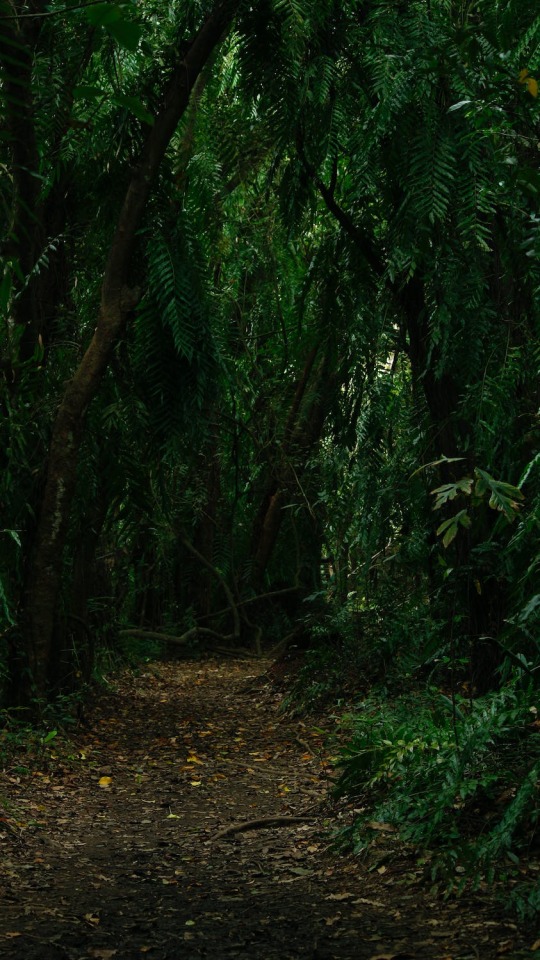

In Caribbean folklore, La Diablesse is a devil haunts the edges of the woods luring men to their untimely deaths with her beauty.
It is said she traded her soul to the devil in pursuit of vanity. The existence of this deal is evidenced by one of her feet having turned into a cloven hoof.
3 notes
·
View notes
Text
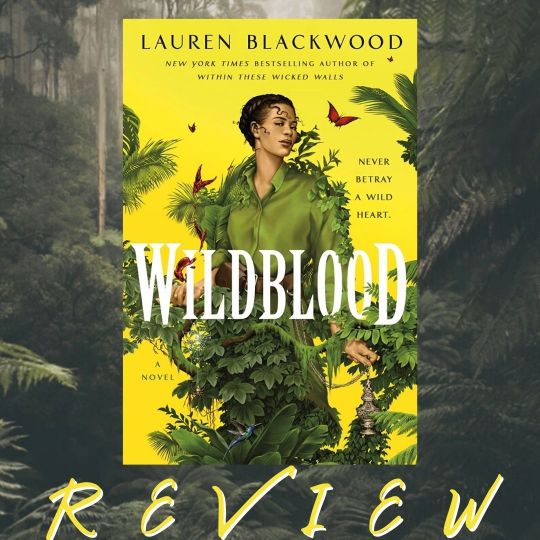
#arc review#arc reader#arc reviewer#book review#book reviewer#book blog#netgalley#st martins press#wednesday books#lauren blackwood#wildblood#5 star reviews#five star review#coming of age#caribbean folklore#fantasy romance#historical fantasy#caribbean mythology#standalone novel#dark fantasy#new release#new release book#new book#new book alert#new book release
3 notes
·
View notes
Text
It's My Book Birthday!
Just a little note to say, It’s my Book Birthday today!!! THE NIGHTWARD is officially available for sale everywhere! It’s incredible to realise that just three years ago, I was diagnosed with breast cancer and now look at at where I am! It wasn’t an easy task working on this book in the aftermath of chemo, and fighting through brain fog and side effects as my treatment continues. But I’m SO…

View On WordPress
#bodyguard#books#caribbean#caribbean folklore#caribbean mythology#child queen#debut novel#Douen#fairymaid#novels#pub day#publishing#science fantasy#scifantasy#scifi#speculative fiction#The Nightward#The Witcher#writing
1 note
·
View note
Text

#lusca#art#digitalart#caribbean folklore#maritime legend#mythical creature#legend#sea monster#ai#aiart
0 notes
Text

#digitalart#maritime legend#legend#aiart#ai#art#caribbean folklore#sea monster#lusca#mythical creature
1 note
·
View note
Text
The Haunting of the Sir Solomon Hochoy Highway

In (belated) honour of Halloween, here’s a spooky urban myth from Claxton Bay. Photo by Hayden Roach.
From Life in Trinidad and Tobago:
”This story dates back to the 1900s, where a young woman becomes the victim of circumstance in this tragic romance.
The lore says, in 1909 the daughter of a Spanish overseer on the Forres Park Sugar Estate, named Maria, fell in love with an Indian labourer who worked there. Maria’s parents, especially her father, did little to hide their disdain toward her relationship. One night, the overseer saw his daughter and her lover in what is described as a “compromising affair”, and became furious. So he waited, and when the young man left his daughter’s company, he made it clear to her that she wasn’t to see him again. But, Maria was in love, and had no intention of ending her relationship with the young man, and retorted that she’d rather die.
When his daughter refused to comply, he took an alternative approach calling upon his most loyal workers to execute the labourer. As the overseer of the estate, it was not difficult for him to persuade them to get the job done. However, word got back to Maria of her father’s plan, and was advised to warn her lover of his inevitable fate if he didn’t leave. Angry and terrified she left her home on a mission, determined to save her love. Unfortunately, Maria never makes it, on her way to him she is bitten by a snake but still she continued on, weakened by the venom, she falls to her death from the hill. Whether, the labourer is murdered by her father’s men, or they find Maria’s body before they could, is not known.
Grief stricken by the loss of his daughter, her father constructs a statue of the Virgin Mary in her memory, on the estate’s tallest hill where he pleaded for her forgiveness. Over the last century, since her death, people claimed to have seen Maria’s ghost trying to cross the Solomon Hochoy highway, where the statue still stands today, although decapitated.”
From Angelo Bissessarsingh’s Virtual Museum of Trinidad and Tobago:
“Many motorists travelling this stretch of roadway in the dead of night have been brought to a screeching halt or worse by swerving to avoid the apparition of a young girl seen darting across the double carriageway. Some have actually stopped to explore the nearby bushes on the verge of the roadway for evidence of her flight but to no avail.
This manifestation is said to be the phantom of the dead child of Forres Park who is searching through time and space for her head, for long ago, the statue atop the hill was decapitated and the head was lost along with much of the torso.”
#trinidad and tobago#caribbean#west indies#west indian#trinbagonian#trinidad#trinidadian#ghost stories#caribbean folklore#folklore#urban legends
3 notes
·
View notes
Text
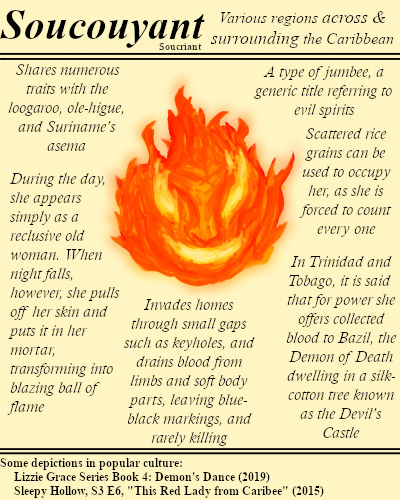
A burning being with some vampiric traits. As an additional note, if one manages to find her skin and rub it with salt or hot peppers, she can be killed as this will prevent her from reentering her skin.
#BriefBestiary#bestiary#digital art#fantasy#folklore#legend#myth#mythology#monster#soucouyant#soucriant#jumbee#jumble#caribbean folklore#caribbean legend#bloodsucker#evil spirit#bazil#demon of death#devil's castle#bazil the demon of death#living fire
16 notes
·
View notes

